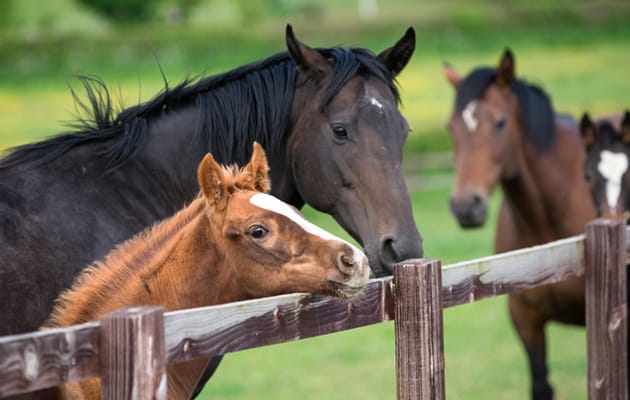
Not many breeds of horses can lay claim to the level of influence Thoroughbred horse breeds have had on equestrian life. From North America to Europe, Japan, and South America, their popularity has made them the de facto apex horse breed all over the world.
But other than being known for horse racing, most people know little about this particular horse breed. There are plenty of other facts worth learning about them. Here, we discuss everything worth knowing about Thoroughbred horse breeds.
-
All Modern Thoroughbreds are traceable to three stallions
Today, there are millions of Thoroughbreds in the world, and about 100,000 foals are registered each year globally. However, every single one can trace their lineage to three stallions from the 17th and 18th centuries.
These stallions, imported to England from the Middle East, are the Byerley Turk, Darley Arabian, and the Godolphin Arabian. Although there were other crossbreeds, these three formed the foundation of the Thoroughbreds we know today.
As a percentage of the global modern Thoroughbred population, most horses (13.8%) are connected to the Godolphin Arabian, followed by the Darley Arabian (6.5%) and Byerley Turk at 3.3%.
-
They are primarily bred for racing but are capable of more
If there is one thing most people know about Thoroughbred horse breeds, it is that they are used majorly for horse racing. These breeds have made hundreds of punters who took advantage of offers like Royal Ascot tips a lot of money.
However, thoroughbreds are capable of much more. Because of their tall, athletic, and overall majestic looks, they are used in other riding disciplines like dressage, polo, fox hunting, and show jumping.
Asides from sports, thanks to crossbreeding, they have also helped create other horse breeds like Anglo-Arabian, Quarter Horse, Standardbred, and different warmbloods.
-
Thoroughbred Horses are mostly inbred.
The Thoroughbred industry is worth over $34 billion in revenue in the US, and according to the National Horseracing College, the industry contributes over 427 million pounds to the UK economy. Much of that is down to a large number of thoroughbreds available in each country, achieved via inbreeding.
About 78% of alleles in thoroughbreds today are traceable to 30 foundation animals, only three of which are female. This rampant inbreeding is presumably responsible for a high rate of health issues found in this breed. These issues include orthopedic problems, low fertility, pulmonary hemorrhage, and abnormally small hearts.
-
They have long necks and well-chiseled heads.
A good Thoroughbred has a distinctive look different from other horse breeds. They have well-chiseled heads and a long neck, along with a short back, deep chest, lean body, long legs, and high withers.
Sizewise, Thoroughbreds typically range between 62 to 68 inches in height. In terms of skin color, they are most often black, gray, or dark brown. Although it is ultra-rare, there are white thoroughbreds too.
These unique physical characteristics are why they tend to command a lot in financial value, costing about $300,000 in breeding fees alone.